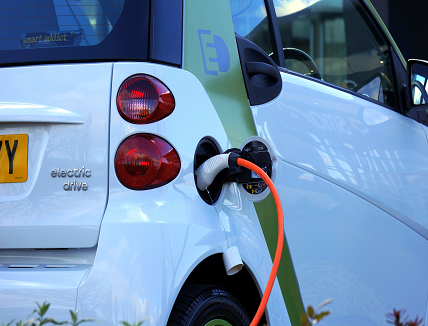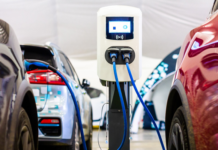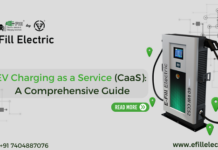
Electric Vehicle Battery Market
Major automakers are increasingly focusing on electric vehicles, which will increase market demand. The continued installation of electric vehicle manufacturing facilities and the resulting surge in sales of electric vehicles is also contributing to the growth of the Electric Vehicle Battery Market . Policies aimed at supporting the deployment of charging stations through direct investment and public-private partnerships will also play a key role in boosting the growth of the Electric Vehicle Battery Market , especially in urban areas.
Demand for electric mobility is expected to increase with the increase in sales of electric vehicles over the expected period. Strategic partnerships between e-mobility providers, battery manufacturers and energy suppliers are also aimed at promoting electric vehicle batteries. Around the same time, automakers continued to innovate to make EVs run more efficiently.
Consumer interest in battery-electric/plug-in vehicles has increased in recent years because they do not require expensive fossil fuels such as petrol, diesel, and petrol, have low maintenance costs, and can reduce overall consumer costs. As a result, the expansion of the Electric Vehicle Battery Market is driven by the eco-friendly properties of EVs. Global concerns over the adverse effects of climate change and concerns over pollution in major cities have increased the demand for electric vehicles.
The support provided by various government agencies to promote electric vehicle sales is a major driver of its growth. This is accelerating the growth of the Electric Vehicle Battery Market around the world. Rising demand for zero-emission vehicles, falling costs of EV battery systems, and growing awareness of global climate change, all of which are boosting the growth of the EV battery market. In addition, further development of lithium-ion technology in EV batteries and expansion of public charging infrastructure offer the potential to benefit the industry.
Top 10 Benefits of Electric Vehicle Battery in 2022
- Advanced batteries in electric vehicles are designed to last, but they will eventually wear out. Some electric vehicle manufacturers offer an 8-year/100,000-mile battery warranty. National Renewable Energy Laboratory predictive modeling (PDF) shows that today’s batteries can last 12-15 years in temperate climates (8-12 years in extreme climates).
- Manufacturers don’t disclose prices for replacement batteries, but some offer extended warranty programs for a monthly fee. If you need to replace your battery out of warranty, it can cost you a lot. Battery prices are expected to fall as battery technology improves and production volumes increase.
- Electric and hybrid vehicles can produce significantly lower emissions than conventional vehicles. All-electric vehicles produce no tailpipe emissions, and PHEVs produce no tailpipe emissions when operating in full electric mode. HEV emissions benefits vary by vehicle model and hybrid propulsion system type.
- Life cycle emissions of electric vehicles depend on the power source they charge and vary by region. In regions that use relatively clean energy sources for power generation, electric vehicles typically have lifecycle emissions advantages over similar conventional vehicles that run on gasoline or diesel. In regions that rely heavily on conventional power generation, EVs may not be able to fully realize their lifecycle emissions benefits. Use the Electricity Sources and Emissions tool to compare the lifecycle emissions of individual vehicle models at a given location.
- Electric vehicles can significantly reduce fuel costs due to the high efficiency of electric drive components. All-electric vehicles and PHEVs rely wholly or partially on electricity, so fuel consumption is measured differently than conventional vehicles. Gasoline equivalent miles per gallon (MPGe) and kilowatt hours per 100 miles (kWh) are common metrics. Depending on how you drive, today’s lightweight all-electric vehicle (or his PHEV in electric mode) can go over 130 MPGe on just 25-40 kWh and go 100 miles.
- HEVs typically have better fuel economy and lower fuel costs than similar conventional vehicles. For example, FuelEconomy.gov lists an EPA city/highway fuel economy estimate of 52 miles per gallon (MPG) for the 2021 Toyota Corolla Hybrid, while the 2021 Conventional Corolla (4 cylinder, auto) estimate is 34 MPG. . Use FuelEconomy.gov’s Find A Car tool to compare fuel economy between hybrid and conventional models.
- The fuel economy of mid- and heavy-duty all-electric vehicles and PHEVs is highly dependent on the load and duty cycle they carry, but in the right applications, all-electric vehicles can be more competitive in terms of fuel costs than their traditional counterparts. maintain superiority.
- Electric vehicles generally have lower energy costs than comparable conventional vehicles, but the purchase price can be significantly higher. As production increases and battery technology continues to mature, prices are likely to converge on conventional vehicles. Additionally, initial costs can be offset by fuel cost savings, federal tax credits, and state and city incentives. A federally approved plug-in electric drive vehicle tax credit is available for his EV purchases from manufacturers that have not yet met certain vehicle sales standards.
- The United States became a net exporter of oil in 2020, with exports exceeding imports, but imports of 7.86 million barrels per day remained an important part of the supply-demand balance in domestic and international markets. Overall, the transportation sector accounts for about 30% of total US energy demand and her 70% of US oil consumption.
- Multiple fuel sources used to generate electricity will be a safer source of energy for the electrified portion of the transportation sector. Both plug-in hybrid electric vehicles (PHEV) and fully electric vehicles, also known as battery electric vehicles (BEV), can run exclusively on U.S.-generated electricity from natural gas, coal, nuclear, wind, and hydro. Solar power.
Recent Developments in the Electric Vehicle Battery Market
- In 2018, LG Chem invested $380 million in its Polish subsidiary LG Chem Wroclaw Resources to build 41,300 SK. Production site in Wroclaw, Poland.
- In response to growing demand from the automotive industry, EnerSys announced in August 2019 that he is increasing production capacity at his two plants, specifically in Pennsylvania and Florida.
- In March 2019, GS Yuasa opened a new plant for lead-acid battery vehicles in Turkey. The project will be handled by Yuasa Aku Sanayi ve Ticaret Anonim βirketi (IGYA), a shareholder of GS Yuasa.
Conclusion
Electric vehicle batteries offer numerous advantages over traditional petrol-powered vehicles, and recent developments are increasing the viability of electric transport solutions. The development of the Electric Vehicle Battery Market has resulted in a number of advantages such as improved efficiency, lower operating costs, and reduced pollution. Recent advances have also resulted in improved range and charging speed, as well as novel battery solutions such as solid-state batteries. As the Electric Vehicle Battery Market industry continues to mature, we can expect more advancements in the coming years which will only serve to improve the convenience, efficiency and cost of electric vehicle solutions.


















